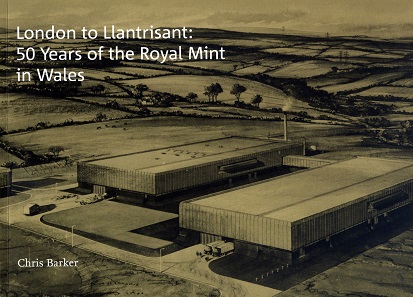Written by Ursula Kampmann
Translated by Leonie Schulze
February 28, 2019 – February 15, 1971 was a memorable day. As the last country on earth to do so, Great Britain gave up the Carolingian monetary system dating from the 9th century. Instead of pound, shilling and penny, Great Britain was now to also introduce a decimal monetary system with one pound being made up of 100 pence. But how was the British mint in London supposed to successfully accomplish this task? It was designed to produce the annual demand of Great Britain and the Commonwealth, not hundreds of millions of new coins. The decimalization raised the question of whether or not a space-consuming mint at the heart of a metropolis was still appropriate.
Chris Barker, London to Llantrisant. 50 Years of the Royal Mint in Wales. The Royal Mint Museum. 54 pp. with colored and gray scale images. Paperback. 29.8 x 21 cm. 5 GBP (only available at the Royal Mint Museum shop.)
The events that followed are the topic of Chris Barker’s richly illustrated book. He describes the move of a mint, i.e. what location options were discussed at the time, how different politicians lobbied for their preferred sites, and how the Welsh city of Llantrisant won the bid. The money factory was constructed in record time: the ground-breaking ceremony was held in August 1967. On December 17, 1968, the royal couple itself opened the new mint.
The new coins minted for the decimalization of the British currency as well as the vast range of products the Royal Mint is proud of today wrap up the interesting booklet, which is only available on site at the museum shop of the Royal Mint Museum.
In 2018 the Royal Mint invited collectors to participate in a coin hunt for 10 pence pieces featuring British icons like James Bond as well as Fish & Chips.




